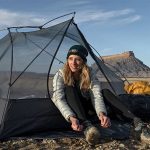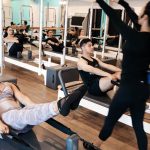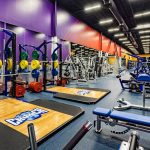Many specialty outdoor retailers had a much more profitable first quarter this year as a record snow pack and cold weather helped them clear winter merchandise, often at much higher margins. But the long, snowy and cold winter has also stunted planned spring apparel sales.
Many retailers say Memorial Day weekend is shaping up as more critical than usual in the wake of the drawn-out winter. Temperatures were below average throughout much of the country in March and April.
According to Weather Trends International, March was the coldest in six years, wettest in ten years and snowiest in 12 years, while Easter was the coldest in 16+ years.
Still, there are bright spots in the market.
“Camping, watersports and cycle sports especially are doing fine,” said David Labbe, CFO for Kittery Trading Post in Maine. “People are going outdoors and – believe it or not – because of gas prices, people are buying bikes. Where the real weakness is, is in apparel. People are still buying the fishing rod, the kayak or the gun and going outdoors. What they are not buying is second pair of shorts or t-shirt.”
For that reason, retailers said they were not particularly cheered by a report released by Outdoor Industry Association earlier this month that showed total sales through all channels rose 9% during the first quarter. The OIA said sales rose in the mid-single to low double-digit range across four of five major categories. In descending order of growth those categories were equipment (winter sports, tents, sleeping bags), equipment accessories (hydration, food, tools, luggage, trekking poles), apparel and footwear.
The OIA report indicates that tents grew at roughly 25% in both dollars and units, while winter equipment grew at about half that rate led by backcountry gear and radonee/AT skis. That gain appeared to take a bite out of telemark sales the fastest declining sub-category in snow sports.
While the weather drove impressive gains in winter equipment, hand-held bottle sales grew even faster in both specialty and full-line channels. Because the OIA data does not distinguish between polycarbonate bottles and new BPA-free alternatives, its hard to tell whether rising concerns over the potential health effects of PBA are driving sales.
Outerwear Sales Dominate the Cash Register in Q1
In apparel, meanwhile, outerwear rose 14% in units and 17% in dollars with rainwear growing more than three times faster than the next closest category, the OIA data shows. In footwear, strong sales of boots and accessories could not overcome a steep drop in sandal sales as the cold weather kept many folks bundled and booted late into the winter. Likewise, paddlesports sales fell off by 9% on a slightly lower drop in unit sales.
For winter sports, last years extraordinarily warm and dry weather made for easy comps, particularly in places like New England and the West. Still, the spike in tent sales puzzled many.
At Sierra Designs, company President Paul Gagner speculated that the jump reflected price conscious consumers taking advantage of clearance sales or migrating to lower priced private labels. Retail point-of-sale data from SportsScanINFO shows significant price erosion in the family tent category at chain stores for the retail fiscal first quarter through April.
Gagner, however, stressed that first-quarter sales are largely irrelevant to what happens in the spring at retail.
“The first three months are generally used to clear out excess and surplus inventory,” said Gagner. “The second quarter is where the meat of the business is done for bags and tents.”
Compressed spring hurting apparel sales
Gagner and several retailers said they are concerned about compression of the spring selling season, which normally peaks in April.
“We really have a shorter selling season that has slid to the right,” said Gagner. “From the indications Ive heard, shorts, short-sleeved shirts and sandals are challenged because of the weather.”
The SportScanINFO data on chain stores shows dollar sales of outdoor apparel, meanwhile, were down in the mid-single-digits on a double-digit increase in average selling prices, which usually indicates lower sales of shorts and Ts and higher outerwear sales. T
The SSI data indicates that sandal sales were down in mid-single-digits at full-line sporting goods, but up by the same rate at specialty. Trail sandals were down sharply at sporting goods and unit sales declined in the mid-singles at specialty.
The apparel issue is clearly supported at the Alpine Shop Ltd., which operates three stores around St. Louis.
“Its literally this past week that it got over 50 degrees in the evenings on a consistent basis,” said Lisa Hollenbeck, who is the merchandise manager for the stores, which she owns with her husband. “Its bumming us out because spring goods are not selling. Weve canceled a lot of spring orders and are now adjusting fall orders.”
Sales of gear, however, appear to be holding up relatively well. Gagner said retail sales of Sierra Designs tents from mid-April to mid-May were up over last year – thanks in part to REIs anniversary sale.
Nor did retail sales of Big Agnes tents and bags slow in the first quarter, said Len Zanni, a co-founder and marketing director of the young, fast-growing brand. He said Big Agnes bag sales were up “big time” in the first quarter. The company is seeing strong growth of lightweight backpacking tents and larger family base style tents across specialty, chain and Internet channels.
Give me a good winter over a good spring any day…
The good news for many retailers is that a good first quarter goes a long ways toward a profitable year. While average selling prices on tents, equipment accessories and boats declined during the first quarter, the channels overall average sales price rose in the mid-single digits, with much higher gains on ski gear, winter boots and apparel, according to the OIA survey data. Thats a welcome dynamic for Hollenbeck.
If you look at the overall health of the business, you do so much less business in spring that its not significant if you have a longer winter,” said Hollenbeck. “Its much better, selling $200 jackets in winter than selling tank tops and $49 pairs of flip flops in the spring.”
While Alpines first-quarter sales were lower, they were much more profitable because the company only bought 80% of what it expected to sell going into the season. When winter finally hit in late December, Hollenbeck bought close outs, which she was able to sell at higher price points than last winter.
Record Snow Melt May Lead to Banner Boat Year
Vendors and retailers contacted last week were surprised by OIAs first quarter report on paddlesports sales, which indicated a considerable decline for the January through March period, and the SSI data that saw only the sporting kayak category posting a sales increase for the period through April. Several said sales have been strong since the show season kicked off in mid-March.
“We are not experiencing a 9% decline,” said Sue Rechner, CEO of Confluence Watersports, the nations largest paddlesports company. “Actually, we are going in the opposite direction and sometimes higher. Some of our key specialty retailers are having higher than double-digit sell through for February and March. May also is incredibly strong.”
The vibe in the industry is that while fewer people are turning out for regional shows because of high gas prices, those that are coming are older and buying more expensive gear.
“People are buying full-rack systems, carbon fiber paddles, and expensive boats,” said John Nemjo, owner of Mountainman Outdoor Supply in Old Forge, NY, which held the 10th annual Adirondack Paddlefest last weekend. Mountainman stocks 1,000 boats and draws people from two states away to the event. “We are selling a lot of $2,500 kayaks two at a time. I think weve got paddlers that bought rec boats seven or eight years ago that [now] want lighter boats.”
At Legacy Paddlesports, which launched Native Watercraft in 2006 to cater to the expanding fishing market, sales to retailers are up 45% through April, said company President Andy Zimmerman. Legacy also owns the Liquid Logic whitewater and Heritage kayak brands.
“My sense here to date is that the whole industry is up,” said Zimmerman, who also owns the Get Outdoors paddle shop in Greensboro, NC, where sales are up 6% on top of last years record sales. He suggested that a number of the bigger paddle-centric shops may be missing from the assessed data.
Regardless, a recent scouting report from his sales manager at Liquid Logic indicates heavy snowmelt is stimulating demand out West.
“The snow is melting and the people are boating,” said Zimmerman. “I think we are in for a banner year.”













